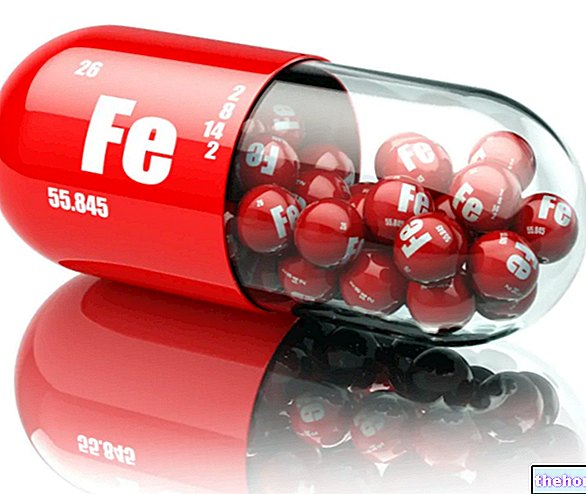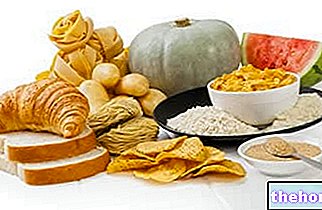Phospholipids are organic molecules belonging to the class of hydrolyzable lipids, which includes all lipids characterized by at least one fatty acid in their structure.
In foods, phospholipids are not very abundant and represent about 2% of total lipids, however they can be synthesized by the various cells of the organism; they have both an energetic and structural role, with the latter predominating.
In relation to the chemical structure, phospholipids can be divided into two categories: phosphoglycerols (or phosphoglycerides) and sphingophospholipids.
Phosphoglycerides
Structurally, phosphoglycerols are similar to the more abundant triglycerides, where one glycerol molecule is esterified with three fatty acids. Unlike these, in phosphoglycerides only two hydroxyls of glycerol are esterified with as many molecules of fatty acids, while the third is esterified with phosphoric acid; this can in turn be linked to a polar molecule, such as an alcohol, an amino alcohol or a polyalcohol (eg inositol). The simpler phospholipid is called phosphatidic acid.


Lecithins are phospholipids belonging to the category of phosphoglycerides; in their structure the phosphoric group is linked to the aminoalcohol choline (for this reason they are also known as phosphatidylcholine). Depending on the hydroxyl to which the phosphoric group is linked, there are alpha-lecithins (primary hydroxyl), more common, and beta -lecithins (secondary hydroxyl).
In addition to being part of the constitution of the plasma membrane, lecithins allow cholesterol to be esterified by facilitating its entry into HDL (for this reason they are taken as a supplement by those suffering from high cholesterol).
Other phosphoglycerides of particular biological interest are phosphatidyl-ethanolamine, phosphatidylserine and phosphatidinylinositol.
Sphingophospholipids
Sphingophospholipids are particular phosphoglycerides, in which glycerol is replaced by an amino alcohol

The most important sphingophospholipids are sphingomyelin and cerebroside, which are part of the constitution of myelin (a substance that surrounds and protects the axons of neurons). In sphingomyelin, sphingosine is linked to choline, while in cerebroside it is associated with galactose (which as such belongs to the class of sphingoglycolipids).
Properties of phospholipids
The best known and most important characteristic of phospholipids lies in their structure, which has a hydrophilic and a hydrophobic part; in particular, the lipophilic end is given by the hydrocarbon chains of fatty acids, while the hydrophilic part corresponds to the esterified phosphoric group. It follows that phospholipids are amphipathic (or amphiphilic) molecules, which as such - if immersed in an aqueous liquid - they tend to spontaneously form a double layer in which the hydrophilic parts face outwards and the hydrophobic tails towards the inside. This characteristic is very important from a technical and biological point of view. Phospholipids are in fact the main constituents of the cell membrane (or plasmalemma), in which they arrange themselves in a double layer orienting the polar heads to the outside and the hydrophobic tails to the inside. This allows to control the flow of substances entering and leaving the cell.
The most abundant phospholipids in biological membranes are phosphatidylcholine (lecithin), phosphatidylethanolamine, sphingomyelin and phosphatidylserine.
Phospholipids also play a "very important structural function" within lipoproteins, molecules made up of triglycerides, phospholipids, cholesterol, fat-soluble vitamins and proteins in varying proportions. The function of the phospholipids inside these particles is to help make them water-soluble, therefore they can be transported from the bloodstream to the cells responsible for their metabolization, where the insoluble components (triglycerides) are released.
Phospholipids are also important in blood coagulation processes, in the inflammatory response, in the constitution of myelin and bile produced by the liver (they prevent cholesterol from precipitating into crystals, preventing the formation of stones); it is precisely this organ that is the main body structure responsible for the synthesis of phospholipids, which can still be synthesized - albeit with different speeds - by all tissues.
From a technical point of view, phospholipids are able to hold together two substances, such as fats and water, which are normally not mixable. This property, called emulsifier, is exploited in various industrial sectors, ranging from food use (for production of creams, sauces, ice creams, etc.) to the cosmetic and health sector.




























